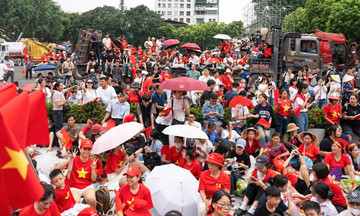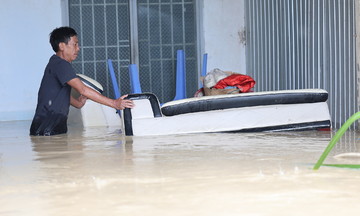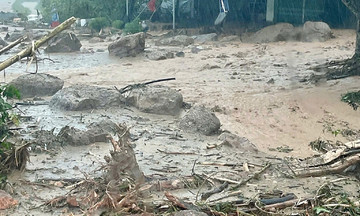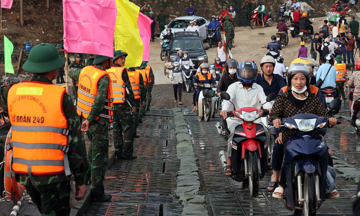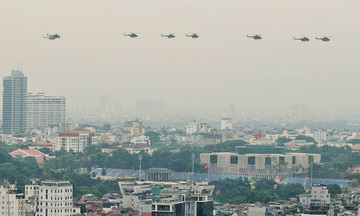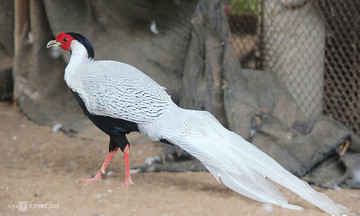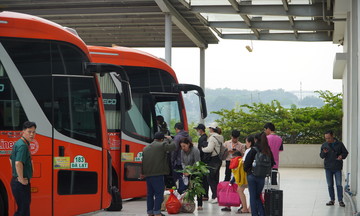Since July 1st, Quang Ngai province has officially operated under a two-tiered administrative model, following its merger with Kon Tum province. Nguyen Hoang Giang was appointed by the central government as the chairman of the newly merged province's People's Committee.
VnExpress spoke with Mr. Giang about the province's advantages, the operation of the two-tiered administration, attracting investment, and administrative reform in what is now Vietnam's 5th largest province by area.
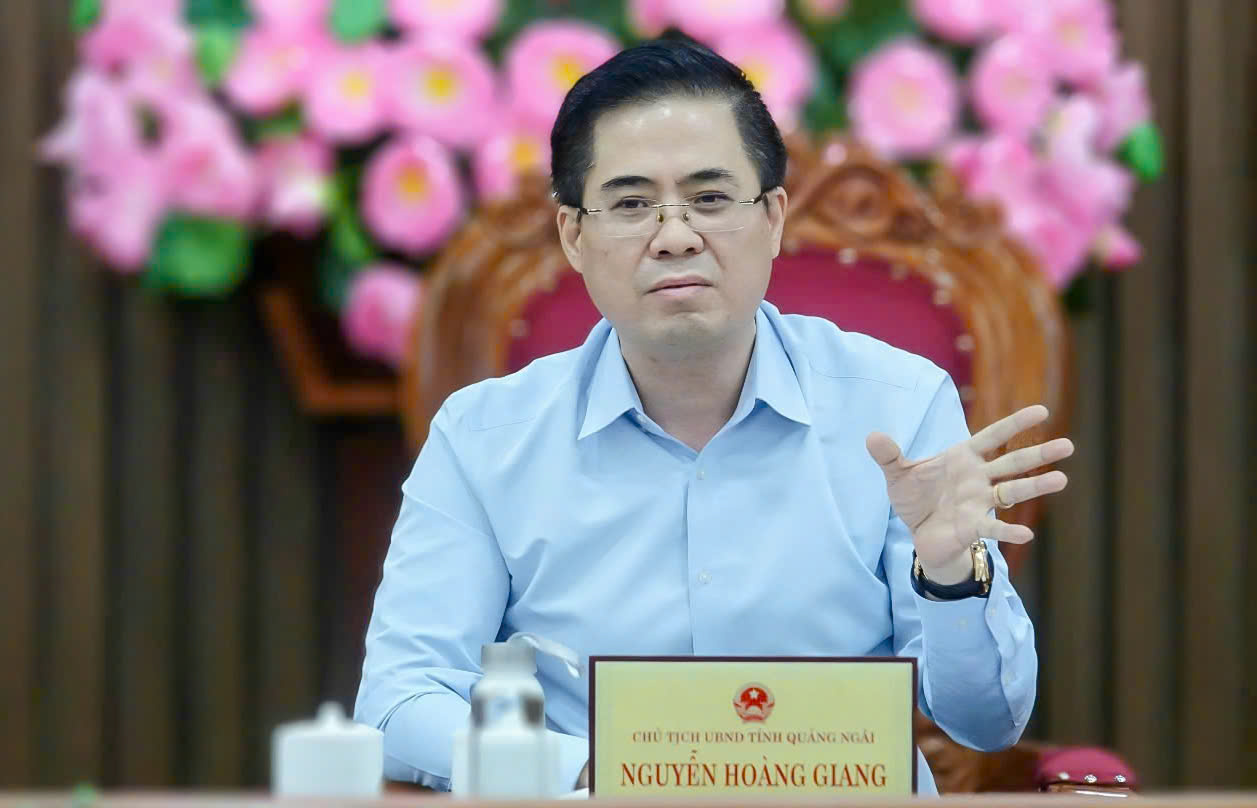 |
Mr. Nguyen Hoang Giang, Chairman of the Quang Ngai Provincial People's Committee. Photo: Pham Linh |
Mr. Nguyen Hoang Giang, Chairman of the Quang Ngai Provincial People's Committee. Photo: Pham Linh
**What is the significance of the merger between Quang Ngai and Kon Tum?**
The merger, directed by the central government, aims to streamline the administrative apparatus and reduce the number of provinces. The merger allows the provinces to complement each other's strengths in terms of geographical location, human resources, natural resources, and economic structure, creating new opportunities for development.
This merger echoes a famous central Vietnamese folk verse: "Whoever goes back, tell the upstream village, to send down young jackfruit and receive dried flying fish in return." This verse reflects the long-standing trade and connection between the mountains and the sea.
The merger is a continuation of this historical exchange, but on a larger scale. The new Quang Ngai province covers approximately 14,830 km2, making it the 5th largest in the country. It enjoys a combined coastal and mountainous terrain, with a 129 km coastline to the east and a 292 km border with Laos and Cambodia to the west.
Located at the heart of the East-West Economic Corridor, the province boasts a diverse economy, ranging from industry and agriculture to services, spanning from the forests to the sea.
With a population of 2.16 million comprising 43 ethnic groups, the new Quang Ngai province has the potential for sustainable and equitable development, aiming to improve the lives of people from the coast to the highlands.
**Could you elaborate on the advantages of the new Quang Ngai province?**
Quang Ngai's industrial development began with the establishment of the Dung Quat Oil Refinery, Vietnam's first oil refinery, followed by the Vietnam - Singapore Industrial Park (VSIP) with 44 foreign direct investment (FDI) projects. In recent years, the Hoa Phat Steel project has significantly contributed to the province's GDP and created local jobs. The province also has prominent agricultural processing plants, such as sugar and instant noodle factories, along with woodchip and paper processing plants.
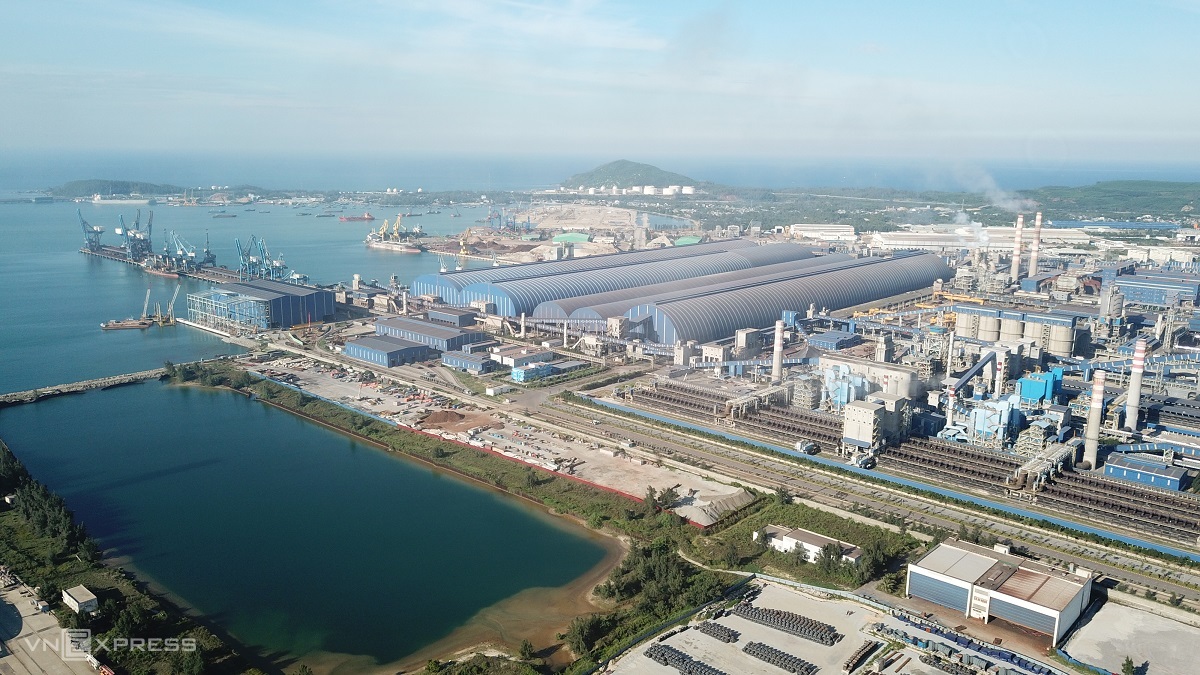 |
Dung Quat Economic Zone, home to key industrial enterprises such as the Dung Quat Oil Refinery and Hoa Phat Steel Plant. Photo: Pham Linh |
Dung Quat Economic Zone, home to key industrial enterprises such as the Dung Quat Oil Refinery and Hoa Phat Steel Plant. Photo: Pham Linh
As a coastal province with a 129 km coastline, Quang Ngai has several deep-water ports with 31 wharves (expected to increase to 41), and a large fishing fleet of about 5,000 boats, yielding hundreds of thousands of tons of seafood annually.
The long coastline also offers beautiful beaches, capes, and cliffs with volcanic sedimentary geology that attract tourists. Beaches like My Khe and Chau Tan have become popular destinations. For cultural and heritage tourism, we have Ly Son island, home of the Hoang Sa soldiers, and An Khe lagoon with its ancient Sa Huynh culture.
Kon Tum, on the other hand, possesses agricultural and forestry advantages. It is a major source of coffee and rubber, and especially Ngoc Linh ginseng, with over 4,000 hectares of cultivation, along with areas specializing in industrial crops.
In terms of tourism, Kon Tum has Mang Den, known for its cool climate, often compared to Da Lat, and the unique culture of the highland communities. The Bo Y border gate opens up prospects for trade cooperation with Laos, Cambodia, and Thailand.
The merged province enjoys a full range of advantages, from coastal to mountainous regions, encompassing industry, agriculture, and tourism, with a focus on key sectors. Its human resources of 2.16 million people provide both a labor force and a consumer market.
**How will Quang Ngai leverage these advantages?**
Transportation infrastructure is the priority, aiming for seamless connectivity from Ly Son island to the Bo Y border gate.
The province will expand National Highway 24 connecting Quang Ngai and Kon Tum while awaiting the completion of the Quang Ngai - Kon Tum expressway (by 2030). Further plans include exploring a route connecting the Central Highlands to the border gate. Regarding waterways, Dung Quat Port will be expanded. Two airport projects in Ly Son and Mang Den are also under consideration.
In the future, Quang Ngai plans to upgrade the Bo Y international border gate into a cross-border trade center connecting southern Laos, northeastern Cambodia, and northeastern Thailand.
Alongside "hard infrastructure," Quang Ngai prioritizes "soft infrastructure," focusing on serving people and businesses, placing them at the center as customers rather than subjects of management. The province will improve the investment environment, simplify procedures, implement digital transformation, and leverage free trade agreements to attract FDI. Recently, over 116 administrative procedures have been translated into foreign languages.
Improved infrastructure will enhance Quang Ngai's attractiveness to investors in target sectors such as industry, agriculture, high-tech agriculture, and clean energy.
Industry is considered a key pillar for economic development. The province will focus on building the National Petrochemical Complex, increasing occupancy rates in industrial zones, and prioritizing scientific technology and clean energy.
Agricultural areas will specialize in certain crops, with Ngoc Linh ginseng cultivation expanding to 6,000 hectares. To enhance agricultural value and increase farmer incomes, the province will attract investment in deep processing plants.
 |
Mang Den commune in Quang Ngai province - with a climate similar to Da Lat - has developed resorts that attract tourists. Photo: Tran Hoa |
Mang Den commune in Quang Ngai province - with a climate similar to Da Lat - has developed resorts that attract tourists. Photo: Tran Hoa
In tourism, the province continues to develop Ly Son into a national marine – island tourism center and Mang Den into an ecological, resort, and cultural discovery destination. Quang Ngai is also developing urban areas along the Tra Khuc and Dak Bla rivers, and the My Khe and Sa Huynh coasts, combining preservation and promotion of festivals, cuisine, and intangible heritage to create unique tourism products.
The province is improving healthcare quality in mountainous and island areas and focusing on training high-quality human resources and skilled labor in rural areas to facilitate economic restructuring.
**What will the province do to maintain 8.5% growth in 2025?**
To achieve the 8.5% GRDP growth target set by the government for 2025 and contribute to national growth, the province will accelerate public investment disbursement, implement comprehensive digital transformation in management, production, and daily life, improve labor productivity, and reform administrative procedures.
Quang Ngai is adhering to the four key resolutions of the Politburo on science and technology, international integration, institutional improvement, and private sector development.
The province continues to support key projects like the Hoa Phat Dung Quat 2 Steel Complex, Dung Quat Oil Refinery upgrade, VSIP II Quang Ngai, and the high-speed rail track production project. It is also actively attracting investment in high technology, clean energy, and deep agricultural processing, particularly for Ngoc Linh ginseng, while implementing major projects and long-term plans.
Encouragingly, the new Quang Ngai province achieved a 13.02% GRDP growth in Quarter II of 2025 and 11.51% in the first 6 months, exceeding the government's target and ranking among the top provinces nationwide after the merger.
**Since July 1st, people and businesses have been concerned about administrative procedures. How is Quang Ngai ensuring these are not disrupted?**
Given Quang Ngai's vast area, the central government has agreed to temporarily retain some local officials to stay close to the people. The province has established a second Provincial Public Administration Service Center in Kon Tum ward, in addition to the headquarters at 54 Hung Vuong street, to handle administrative procedures under the jurisdiction of departments and agencies.
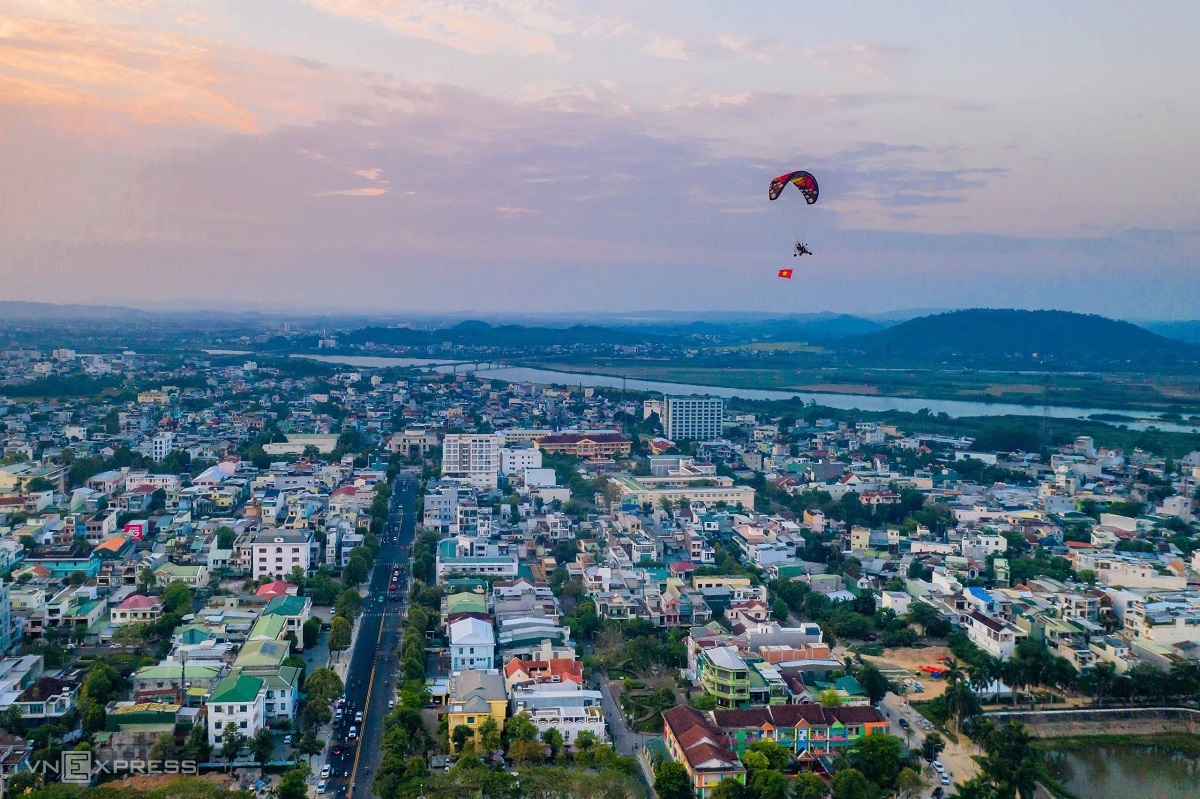 |
Quang Ngai city center. Photo: Bui Thanh Trung |
Quang Ngai city center. Photo: Bui Thanh Trung
Administrative procedures under the jurisdiction of former commune and district People's Committees will be received and processed through the new commune-level Public Administration Service Centers.
People and businesses can choose the most convenient method for submitting applications: in person, online through the National Public Service Portal, or by mail.
For administrative procedures designated as "non-geographically restricted" in Quang Ngai, people and businesses can submit them directly to any commune's Public Administration Service Center or to the Quang Ngai Provincial Public Administration Service Center. For example, residents of Cam Thanh ward can register a household business in Mang Den.
During the restructuring of the two-tiered local government, we instructed agencies to ensure uninterrupted processing of administrative procedures for individuals and organizations.
Pending applications, especially those related to land use received by district, town, and city People's Committees before July 1st, are being transferred to the new commune-level People's Committees for continued processing.
**As you mentioned, Quang Ngai aims to build a service-oriented administration, centered on the people. How will this be achieved?**
A service-oriented administration requires two elements: professionalism and public service ethics.
Professionalism in the management system will be demonstrated through a streamlined apparatus and simple, efficient administrative procedures. We will continue to review and eliminate unnecessary elements and actively implement digital transformation for a more efficient, smooth, and intelligent management system. For individual officials and civil servants, professionalism is reflected in their capacity and qualifications to address public needs and adapt to technological advancements.
Public service ethics will be emphasized through extensive training at all levels, promoting a friendly and professional government image as an individual responsibility. Officials will receive soft skills training in communication, behavior, and situation handling. Everyone in the system should cultivate a dedicated service culture, measuring their effectiveness by public and business satisfaction.
Management needs to enforce administrative discipline and strictly handle harassment and inconvenience, while encouraging innovation and solution-oriented approaches.
Quang Ngai has established mechanisms for receiving feedback through various channels, from hotlines and online portals to social media. Regular and unannounced inspections and assessments of agency performance will be conducted.
Regular dialogues with the public and businesses will be maintained to address concerns promptly and enhance public service quality.
Implementing the two-tiered administration model and building a service-oriented administration is a long-term process requiring perseverance, determination, and unity from the political system and the entire population. The province is committed to realizing this goal, contributing to a favorable investment and business environment and improving the quality of life for its citizens.
Pham Linh





